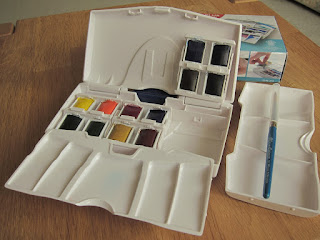But is it what Oxford really needs? Is it ten years too late? Initial reports said that retail occupancy was around the 50 percent mark, but that was expected to rise in time. There has been a general decline in shops in Oxford city centre since the 1990s, especially of independent businesses catering for more specialised items.
 Despite the potential benefits, it has not happened without more heritage loss to the city. The former St Ebbes district, which was levelled in the 1960s to create car parking, has had much of its archaeology obliterated -- including the site of the medieval Greyfriars friary -- when deep foundations were dug for the new developments. Ironically, the early 1970s concrete car park itself is also gone, despite featuring in one of the Inspector Morse episodes! And loss of a number of mature trees did not go unnoticed.
Despite the potential benefits, it has not happened without more heritage loss to the city. The former St Ebbes district, which was levelled in the 1960s to create car parking, has had much of its archaeology obliterated -- including the site of the medieval Greyfriars friary -- when deep foundations were dug for the new developments. Ironically, the early 1970s concrete car park itself is also gone, despite featuring in one of the Inspector Morse episodes! And loss of a number of mature trees did not go unnoticed.Predictably, some businesses from the main shopping street, Cornmarket, have already relocated to the Westgate Centre, leaving empty premises and boarded-up entrances. (It took years for the site of HMV's large store to be reoccupied.) Every week, Cornmarket Street seems to look more and more down-at-heel -- surely not a good impression for the thousands of tourists who flock to Oxford every year?
It is well known that Oxford City Council does not like motorised vehicles, and discourages them from the city centre as much as possible. (Which would be great if we could all afford to live in Oxford!) It then seems a little curious that a traffic-generating project like a revamped central shopping centre would be given the go-ahead. People tend to prefer to put their shopping in their cars, rather than wrestle with public transport. Or they go somewhere where they can more easily park and shop...
If you think that this sounds like the City Council does not do joined-up thinking, then you could be right! I would like to be proved wrong, but I predict that the refurbished Westgate Centre will not reach its full potential, and Oxford city centre will continue to look shabby and be a second-rate place to shop. Such a waste of potential!
















